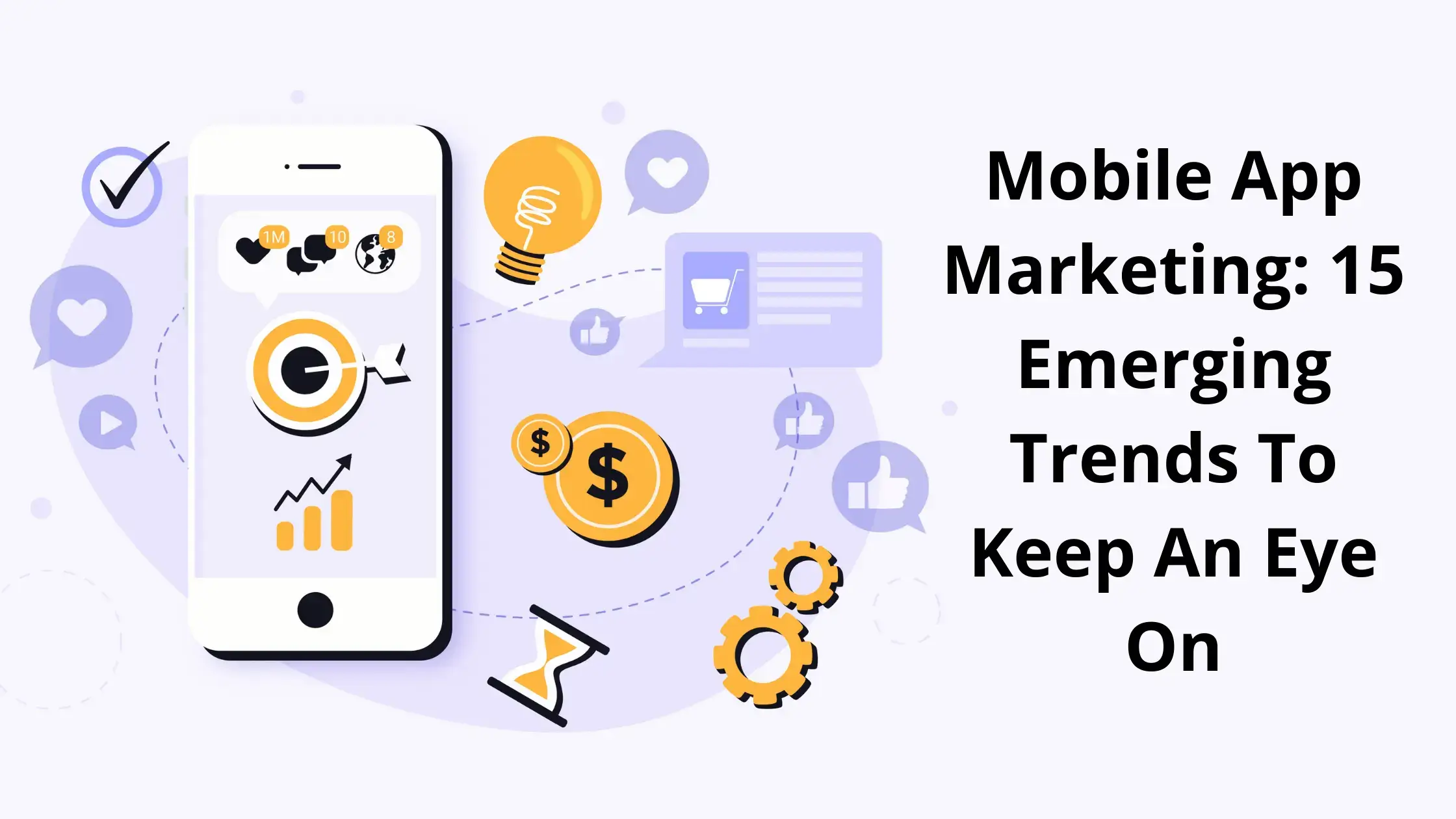With so many apps available on the world’s leading app stores, it’s easy to get lost in the crowd. As a result, enterprises know that they must have an effective marketing strategy if their software is going to stand out. The essential thing to remember when developing a mobile app is to make your product visible. If users don’t know about it, you’ve put in all that time and effort for nothing!
If you want your mobile app or any other app to succeed, you must know how to market its features and benefits effectively. You need a well-defined target audience who is likely going to use the product or service. Learn about what makes it different from competitors’ products/services to have an interest in using an advantage over others with similar offerings.
While communicating your message through channels such as social media platforms may seem easy enough – being able to interpret users’ behavior within their apps can help marketers see which people are converting into regular customers so they can adjust future marketing strategies accordingly. A mobile app marketing strategy should ultimately result in acquiring users that will drive repeat engagement and advocate for your product.
These 15 trends, as well as the step-by-step guide for marketing a mobile app, will show how to increase downloads of your mobile app by improving the number of loyal users, three stages of marketing trends, and eventually metrics to gauge the long-term success.
The Pre-launch / Preparation Phase

The awareness phase of a mobile app marketing plan occurs before the product is launched. This stage includes building brand awareness and increasing product visibility so that the target users will know about your application when it launches to download it, use its services, or purchase items from inside the app.
By being aware of how their target audience discovers apps before they are released, companies can ensure that people learn about them instead of spending all efforts on driving downloads only after an app has been launched, which may lead to lower ROI (return-on-investment) for developers who spend money on advertising campaigns without having established any interest beforehand. So before you begin the awareness stage, it is crucial to have a thorough understanding of your brand messaging and positioning. You want the brand to resonate with customers through values and purpose rather than individual product features.
A brand position provides users with the opportunity to connect more deeply with your product. Here’s a list of steps and strategies that’ll help during the pre-launch stage:
1. Fixate on a Release Date
Compared to Google, Apple has a more rigorous review process that may delay your release. If you plan to release your mobile app on the Apple App Store, you mustn’t underestimate their review process. It can take weeks before they approve an application and sometimes even longer for one with bugs or glitches – which is why we recommend making sure everything works appropriately beforehand by testing thoroughly in the beta stage! Planning far in advance will give you enough time to prepare for your product’s hard launch and allow you to foresee potential issues before they happen.
Pro Tip: If you’re launching an app, pay attention to events in your space that could overshadow its launch.
2. Conduct market research to understand your Target Audience
Identifying the key players in your specific app category is vital before starting any mobile app development work. If you do not recognize these users, then it doesn’t matter how thorough your marketing efforts are – if there’s already a thriving solution to that user pain-point, your product will most likely fail. App Annie provides market data on apps and their success rates for this reason!
Pro Tip: To reach and acquire users, identify and research the most influential groups, blogs, websites, forums your target audience visits, as well as any influencers they look up to on social media. These channels will definitely yield the desired reach and approach.
3. Generate the Perfect User Personas
When it comes to marketing in general, businesses are always trying to understand their target audience. The awareness stage involves learning everything about the people who will use your app and what the target audiences value most in a product like yours. There may also be multiple target audiences, each with different experiences depending on their product or feature within an app.
A user persona is an idealized depiction of your typical customer. Your personas include information about the demographics, background, mobile preferences, and interests of users, as well as their unique identifiers. Additionally, they consider what goals are essential to this type of user while also addressing any challenges that may inhibit them from reaching these objectives.
In order to design a user-friendly mobile product, in-depth personas are essential. They form the foundation for your users’ journey and allow you to customize every aspect of your app based on their preferences. The branding, content within the app, features offered, etc., need to resonate with them all while using only one platform if possible or multiple media that complement each other to avoid any confusion.
By creating user personas, you’ll understand your audience and be able to better tailor marketing campaigns. For instance:
- What mobile OS does this audience use? Android or iOS?
- What is the central pain point collectively experienced by this audience?
- What content style, voice, or tone resonates well with this type of audience?
- What kind of content does this audience primarily engage with online?
- Do these audiences look up to any big influencers in this product’s line on social media?
- Do these users know to pay for apps or make any in-app purchases?
- What platform is the best to leverage for paid advertisements?
If you haven’t researched your audience, you won’t deliver a product relevant to their needs. To assist in coordinating design, business, and marketing decisions to attract the right audience for your product by answering the questions mentioned above.
4. Competitor Analyzation
Your app will likely have competition. To see what your top 5 competitors are up to, create a list of them and their current price, monetization model (such as paid vs. free), app store ranking in the iOS or Google Play Store, user experience (UX) pros and cons they received from users on review sites like Yelp and Amazon Ratings & Reviews; additionally make note if any notable reviews were seen for each competitor’s apps. You can even go far as to create a competitive matrix that shows how your app compares with that of others out there!
To make your app stand out, avoid creating poor features or UX elements that users have reviewed negatively. Instead, think about the unique aspects of your app and what could set it apart from competitors to create an exciting marketing approach for your product.
5. Create a Landing Page / Website
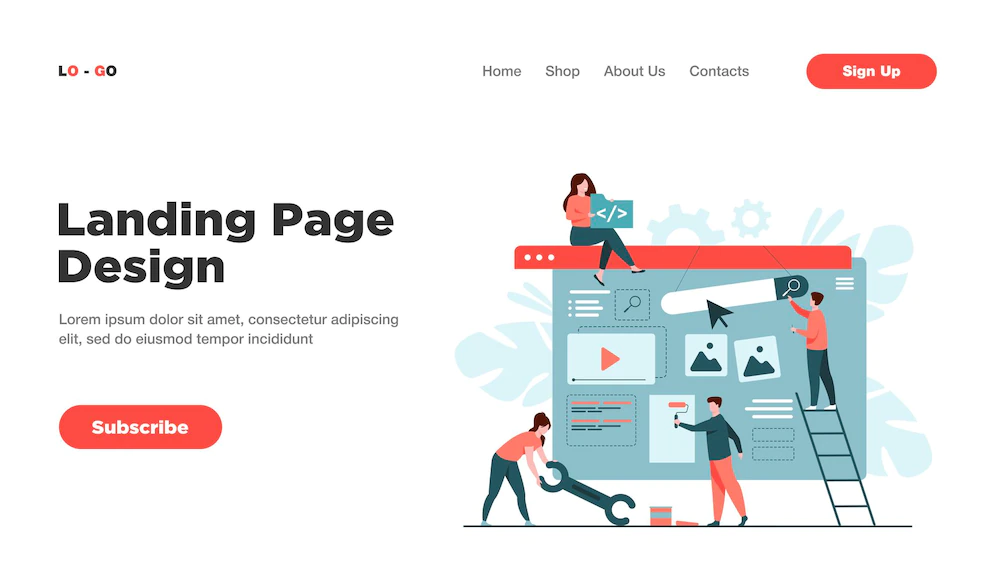
With mobile websites – now the number one source of app installs – creating a pre-launch landing page or at least teasing your product with video content has become standard practice. Having one ready to go will save time and money elsewhere; once you have an engaging website that can be easily repurposed for other platforms like social media or paid ads.
To build hype around your app, start building up search engine optimization (SEO) by creating a pre-launch website. When you set it up, collect emails so that when the mobile app launches and receives updates or new features, they can be notified through email without going back on social media. Authentic 5-star app reviews will transparently demonstrate the quality of your business and make it easier for customers to trust you. If they don’t seem genuine, you will appear insincere to potential buyers.
6. Outreach Initiatives
Having a large social media or online presence is not always enough to make your mobile product successful. Securing backlinks from influencers, publications and bloggers will give you more credibility in the eyes of consumers who are looking for an objective review on new products before making their purchase decision. A relevant list of contacts that belongs to your niche or industry might be interested in writing about and reviewing your app. You should keep the pitch concise with a link to their press kit page, so if they’re interested in writing about it, then they’ll have all of the information needed for them.
7. Run the Social Media Promotions
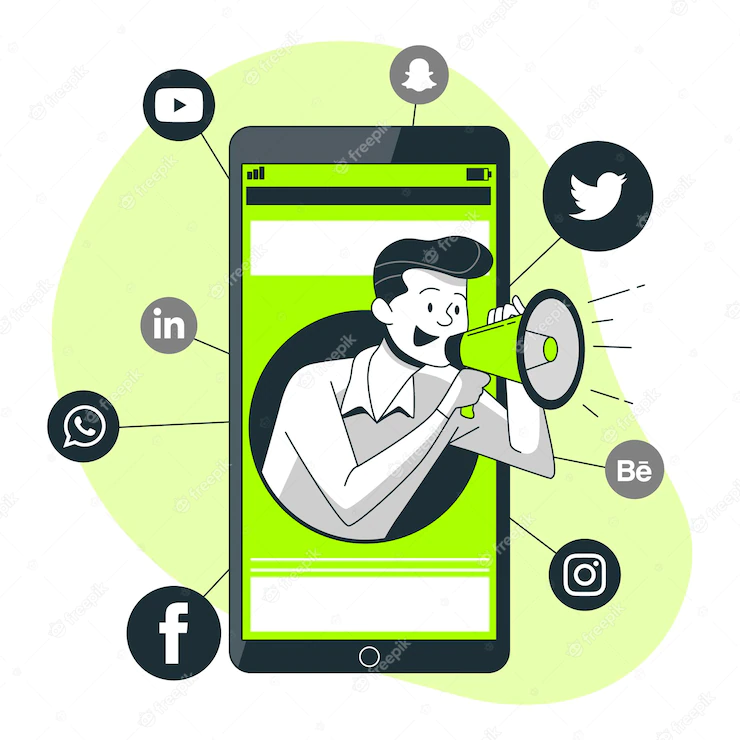
Social media platforms like Twitter, LinkedIn, Pinterest, Facebook, and Instagram allow you to expand your web presence. These sites let you directly communicate with the people who are most likely interested in what you have to offer them; Targeting specific age groups? Identify social media that is popular within these demographics and focus on those!
Ensure to consider the following while performing Social Media Marketing:
- Does the purpose of your app seem obvious?
- Is your social profile clearly displaying that you have an app from the first glance?
- Is there a valid link to download it?
Post company updates and share great content about the launch. Create a tag to use in posts when appropriate; post entertaining and engaging material related to your app so you can build up a community around it!
8. Build a Content Marketing Strategy
Start planning early and write blogs in advance of launching. When it is time to do so, you will already have some followers since you are an authority on this niche topic, and thus, others trust what they read from you more than anything else out there at the moment. Start simple by writing about features or showcasing screenshots or videos- anything that will help build interest among interested potential customers. Here are some benefits for your app through content marketing:
- Drive conversions, traffic, and brand awareness with relevant content.
- By becoming an expert around your niche, create a brand around your app.
- Build a robust trust through relevant content with users.
- Use blog content in email marketing to re-engage the followers on social media or other contacts.
The Acquisition Phase

The possibilities are endless with a user acquisition strategy – remember to be creative and refine your strategy as you go. In the first week after launch, aim for as many downloads as possible! The App Store search results are ranked based on downloads, so if you want your app to do well in the rankings, then it’s crucial that users download quickly.
You should also track where these good reviews originate from, as they will help boost your ranking even further. By following the source of your app downloads, you can focus on improving the most profitable channels and nixing ones that aren’t working. Here’s a list of strategies to help build the user acquisition:
9. Paid Ad Strategy
After launching your new mobile application, advertising with social media platforms that have a broad user base like LinkedIn or those tailored to Millennials on sites like Twitter and Instagram, LinkedIn’s ad platform is great at helping businesses target the audience they want to reach based on their interests, location and more.
For social ads targeting audiences with shorter attention spans, you need to convey your product purpose in a few seconds or less. If your solution is exactly what potential users are looking for, you might want to consider Google Search ads as well.
10. Leveraging App Store Optimization (ASO)
It can be challenging to optimize your app store page to rank higher in search results and increase conversions. However, 65% of apps are discovered from the search in the App Store directly – so it’s worth investing time into App Store Optimization. Once you have optimized for that keyword phrase, keep an eye on its rankings by looking up competitor keywords as well as monitoring how many times users use those searches.
The more visible your app is, the higher it ranks in search results. With a high ranking, you’ll get more downloads, hopefully leading to editors noticing it too! Play with different keywords on title pages to be relevant for searchers to boost visibility and achieve this result. The title of your app is a chance to hook users in and get them clicking on it. Keywords should be strategically placed throughout the description, so you show up for relevant searches, but don’t stuff keywords too much, or Google may punish you.
To make your app more appealing, you should include features and benefits users will get out of it. It would be even better if screenshots or videos were shown to the viewer as well. Lastly, there is a massive market for people who speak other languages, but they cannot find your app because it isn’t in their language yet! Localizing in App Store Optimization can fix this problem by ensuring that all parts of the world use apps made just for them.
The Retention Phase
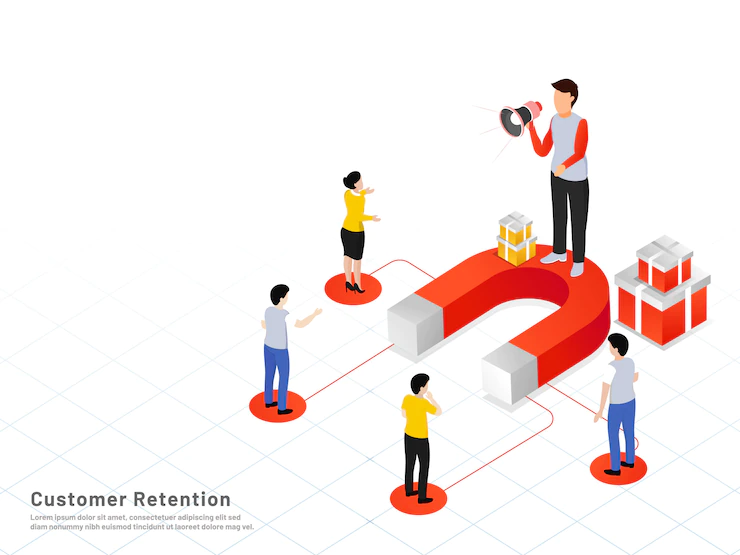
To widen your customer base, you definitely need to do much more to have a retention rate than acquisition marketing. Once users come in the door and download an app or buy a product from you, they’re at risk of leaving if no one is using it! To keep them around for life, focus on retention strategies:
11. Set Up the Two-Way Communication
Having an in-app messaging system will improve your app’s retention rates, which means you’ll see more happy users. Brands using this type of technology have seen user retention within 28 days range from 61 percent to 74 percent.
In-app messages are important notifications that can include payment failures, warning about app issues, or version upgrades. Every message you send will not be relevant to everyone. Segmenting your audience lets you only target information that is valuable and important for them.
12. Push Notifications
Push notifications have been showing to increase user retention in various statistics done by marketers. Apps with high retention rates rank higher in the app store, which is fantastic. Incentivizing users to stay engaged will improve those numbers even further and encourage conversions as well. Mobile-specific rewards, coupons for special promotions or discounts, and specialized content access are all ways you can get people hooked on your product.
Steps for Continued & Long-lasting Success
13. Collect User Feedbacks
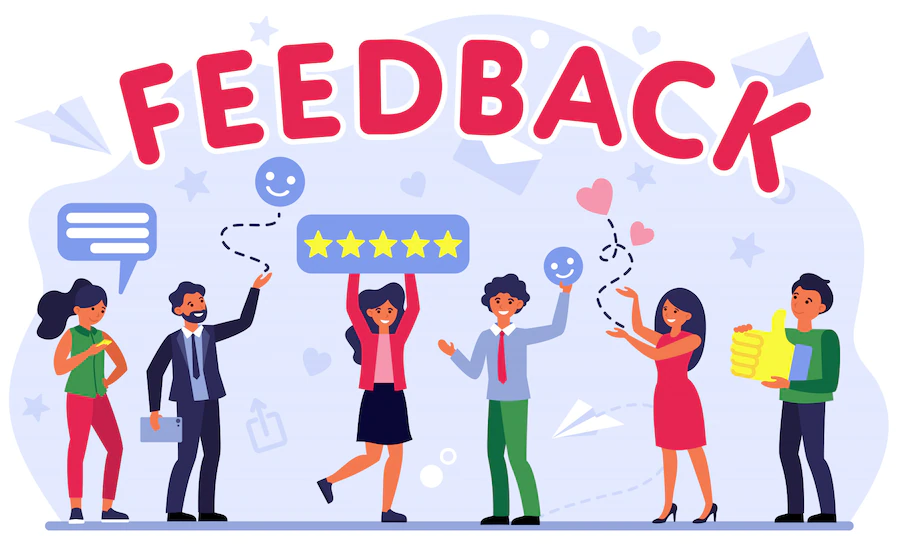
If your app is being used constantly, it means that people have a connection to the product. They will appreciate an invitation to leave a review in exchange for their feedback but don’t compromise user experience while doing so. You should strategically place the popup in a way that will not frustrate users. The more natural and casual you make it sound, the better chances of success for positive reviews.
14. Try Burst Campaign
Instead of the traditional app marketing method, mobile marketers now use a “burst campaign,” which allows buying paid media exposure so that they can climb up in their rankings. It’s usually done over a short period of time (24-72 hours), depending on how much money you’re putting into your marketing efforts.
To reach the highest possible organic ranking, you want to get as many paid installs since they will boost your app’s rank. You hope that when it is ranked high enough, there will be a higher volume of quality organic downloads once people discover it in search results. Paid advertising will maintain steady downloads. You need to keep the momentum going, so continue with paid ads after a successful burst campaign.
15. Provide a Referral Bonus
Dropbox’s success with referrals shows the power of providing your users a bonus or benefit when promoting your app online. The company saw an astounding 3900% growth rate, which is why you should consider leveraging word-of-mouth marketing for more downloads and installs. Within a mere 15 months, Dropbox increased its user count from 1,00,000 in 2008 to 4 million by implementing successful referral programs.
Set Up Your Goals & Track Key Metrics
Measuring your marketing strategy is essential to see if it’s working. You’ll need to set goals and track increases in in-app store ratings over a certain time period and keep an eye on analytical elements that will happen throughout the acquisition, engagement, conversion, and retention phases of the user’s journey. Measurement should be ongoing.
To increase your app’s number of downloads, you need to look at key metrics such as churn rate, daily active users (DAUs), session length, time in-app, session interval, and cost per acquisition. This will help you determine what worked and what didn’t so that the focus is on high-value tactics, which can lead to a skyrocketing download count for your app.
Don’t Oversell / Over Promise.
Making sure you don’t oversell. This is an essential part of any marketing strategy. Word-of-mouth works best, so make sure your messaging stays consistent, or it will result in frustrated users and a high uninstall rate.
It’s essential to diversify your app marketing strategy if you want it to be effective. Some people like video, some prefer images and others text; create visual content that appeals to everybody and make sure reviewers can access this easily at all times! You should always keep in mind, though: strategies need iterations so they can evolve with time – perfect balance is the key here.
Make sure you define KPIs before marketing an app. Identifying important metrics and analyzing performance in real-time will help with marketing an app. A “bottleneck” is when users cannot move past certain stages of the user journey, so it’s vital to focus on this data as well!
Final Thoughts
Above all, Listening to your current users can provide tremendous insight into their user experience and the onboarding path. You might just learn about a marketing channel that will be lucrative within your base of current customers!
Making sure that your potential customers are connected to you is essential, especially when they’re not asleep! Mobile marketing allows brands to bring their story where the customer is. Connecting with people through mobile technologies may seem daunting at first, but once you know how it works and what purpose it serves, this will inevitably help grow your business.
At Squash Apps, our incredible team of developers builds robust mobile apps tailored to your needs, and those could sell themselves among a wide range of audiences. Also, when it is done in a budget-friendly manner, You will acquire a sufficient app marketing budget to promote it.
There are no shortcuts to marketing your app, but it’s the only way you will attain long-term success. When you market an app consistently, it is vital to guarantee that you achieve long-lasting results and rewards from doing so. There’s really not a quick fix for this process, though most people seem keen on finding one – if there were such a thing as overnight fame, everybody would have their own successful apps by now!
Frequently Asked Questions
1.How does mobile app marketing work?
Mobile app marketing is about building a relationship with your users and keeping them engaged throughout the entire lifecycle – from when they first hear and know about your app to become a loyal and regular user.
2.How do I promote my mobile app?
There are different methods and techniques involved in promoting your app. But the key to mobile app marketing is to be consistent and know the target audience who are frequent app users to pursue their attention constantly through various sources like social media channels, paid advertisements, influencer marketing, Email marketing, push notifications, etc. Read the above article to become a pro in marketing your app.
3.How do I advertise my app for free?
Promoting your app for free is a skill and takes persistence. But once you reach that threshold, downloads will increase, and steady traffic will begin using the app. The best way is to use ASO and reaching out through social media. You can also find influencers and use powerful hashtags to promote your app. Start a blog and encourage feedback, which will eventually lead to a community. With this community in hand, you can promote your app for free and quickly jump in higher ranks in App Stores.
4.What are the types of mobile marketing?
Mobile marketing, as a branch of digital marketing that uses mobile phone technology to connect with the audience. Here are some of the basic types:
- SMS Marketing
- Bluetooth Mobile Marketing
- MMS Marketing
- Application Marketing
- Mobile Games
- Mobile Internet Marketing
- Barcodes / QR
Oviya is an experienced technical writer at Squash Apps. She has hailed from Coimbatore, who is a Literature graduate & fond of penning words that fall right into the contexts! She is a Numismatist, Potterwala, Blogger & has an interest in stories that make a difference in the world! Find me on Linked In!

